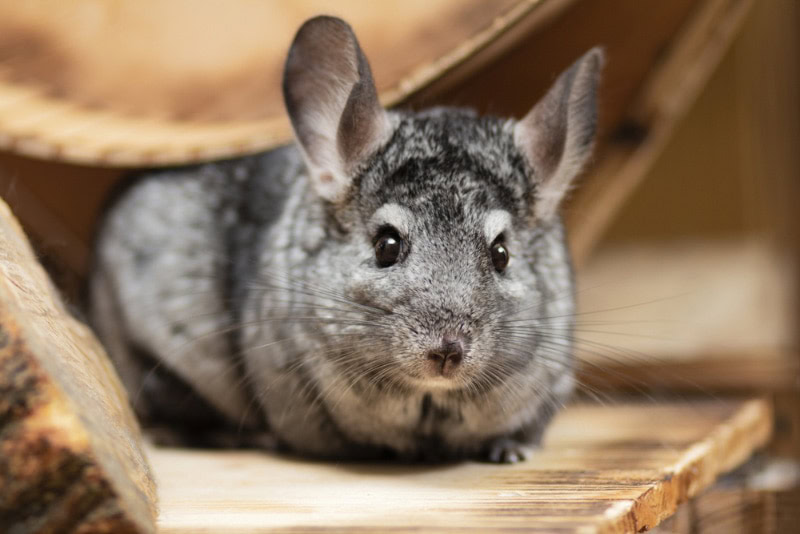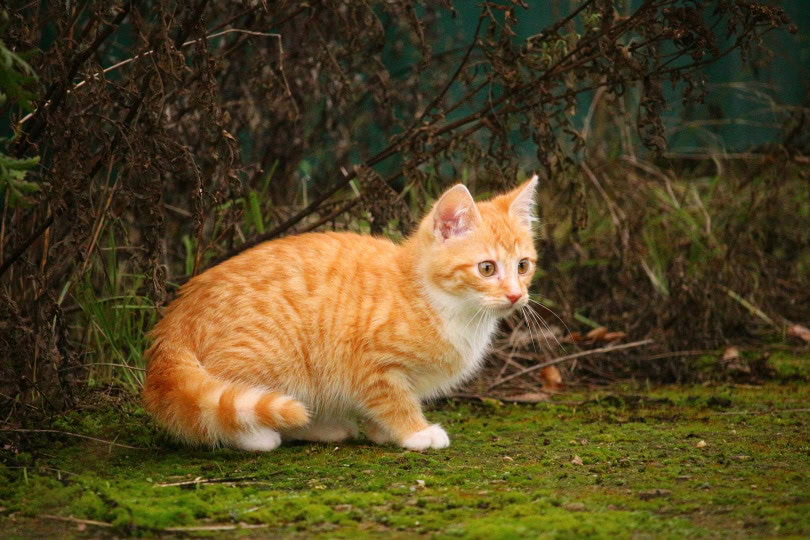VET APPROVED

The information is current and up-to-date in accordance with the latest veterinarian research.
Learn more »Click to Skip Ahead
Aggression is not a personality trait, which means cats aren’t born aggressive. Generally, aggression is an expression of how they’re feeling, which means there is a reason for it and a solution. Despite knowing this, it can be distressing when you’re on the receiving end of an aggressive cat.
Methods to calm your cat might not be obvious, especially if your cat has never shown signs of aggression. To help you through this challenging situation, we’ve collected tips on calming an aggressive cat.

The 6 Tips on How to Calm an Aggressive Cat
1. Keep Your Distance
It’s important not to block your cat’s escape route, especially if they’ve just been aggressive. This allows them to escape or move away if they feel like you’re too close to them. It sounds easier said than done, but try to act in a calm, non-threatening manner and maintain a physical distance. If you get closer to your cat they may see this as a threat, making you a target of their aggression.
2. Calm Response
You should never yell at your pet, but we understand that it might be your first reaction when you’re startled or scared (and it can be scary being faced with an aggressive cat). A calm approach always works best.
Your response to the situation is as important as the reason for the aggression because you are in a position to make the situation better or worse. Reacting with aggression will only increase your cat’s fear or anxiety, which will ultimately only worsen your cat’s aggression.
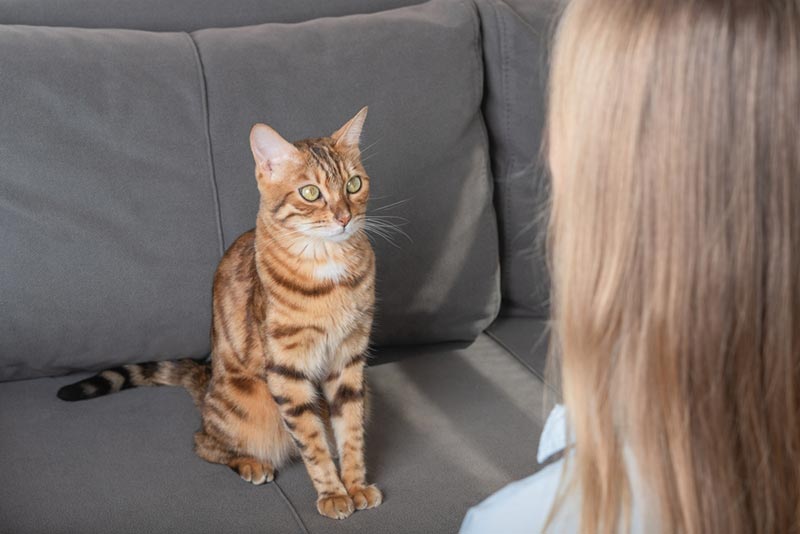
3. Provide a Safe Space
Cat aggression might be a call for help, and a way to answer this call is to give them a place to relax and work through their stress. If you have other pets or small children, you can set aside a quiet room for your cat or even set up steps to a high shelf that your cat can call their own.
4. Herbs and Pheromones
Herbs are an all-natural solution to calm your cat. Herbs like silvervine, catnip, and valerian root can be helpful and work positively as an olfactory stimulus.
A calming cat pheromone diffuser such as Feliway Classic is also a great choice. It can also be sold as a spray to be used in specific locations rather than in a room in the house. Pheromones can help reduce stress-related behavior and anxiety.
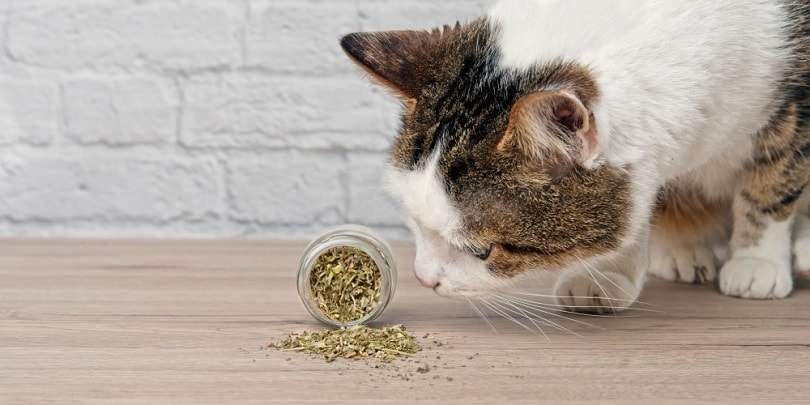
5. Positive Reinforcement
Once your cat has calmed down, how you approach them is important. Go in from the side, so it’s less threatening, and offer treats or catnip. Treats are a brilliant way to reinforce non-aggressive behavior. If it’s cat-on-cat aggression you’re dealing with, however, separate them, and when you reintroduce them, do it slowly with positive reinforcement.
6. Check With a Veterinarian
If aggression is uncharacteristic for your cat, contact a vet as soon as possible. Sudden changes in behavior can be a sign that there’s an underlying health condition that needs prompt intervention. If a cat is in pain, from an infection, a wound, or trauma, for example, they might react by lashing out aggressively. The earlier a vet detects a health issue, the better, and the sooner your cat can return to being their usual, happy self.

The 4 Reasons Why Your Cat Is Being Aggressive
There are several reasons your cat might be acting aggressively. If you want to tackle aggression, you must find the source. Aggression as a reaction to pain will have a different solution than a cat being stressed about a change to their environment, like a new pet.
1. Underlying Health Condition
We’ve touched on this already, but when a cat is angry, you might find they lash out and not just at you. Other pets and other members of the family can all become targets.
- Changes to litter box habits (like urinating outside the box, urinating frequently, or vocalizing while urinating)
- Coughing, sneezing, ocular, or nasal discharge
- Decreased appetite
- Decreased grooming
- Hiding more
- Lack of interest in playing
- Limp or hunched body position
- Yowling/meowing incessantly
If you are worried that your cat’s aggression is due to a health condition, contact your vet for advice immediately. They may refer you to a veterinary behaviorist if the diagnosis is related to a behavioral issue rather than a medical one.
2. Lack of Environmental Enrichment
Whether your cat feels like they have no safe space to retreat to, or there’s been a change to their environment (like a new pet or baby), your cat might be struggling. If they’re missing you, try and make some time for them to feel less lonely or pushed out because of these changes. If they are lacking something to call their own or are fighting for resources, create a safe space for them to retreat to.
3. Fear
If a cat perceives a threat to their environment, they may react aggressively. This could be a person, another pet, a sound, or an object. They’re also more likely to act aggressively if they believe they cannot escape from the danger. Other signs your cat is feeling defensive are spitting, hissing, swatting, growling, scratching, or biting.

4. Frustration
Cats may act violently and redirect their aggression if they cannot respond directly to a stimulus. For example, an indoor cat may see an outdoor cat it would like to interact with. Redirected aggression can also occur due to loud noises or a problem with another cat in the household.
 Be Proactive
Be Proactive
Generally, negative behavior can be fixed if you catch it early enough. Getting your cat spayed or neutered is the first step to manage some of the behavioral problems your cat may display as well as helping them with their long term health.
Whether it’s a health risk or a behavioral problem, if you’re unsure how to keep your cat’s aggression at bay, don’t hesitate to speak to an experienced veterinarian.
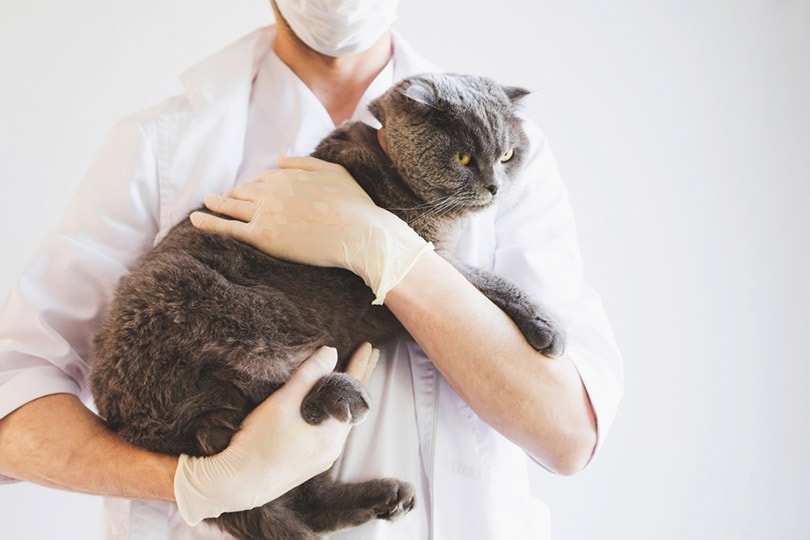

Conclusion
Keeping your cat calm momentarily can be a short-term solution if you don’t know the reason behind the aggression. That is why it is vital for you to be the best advocate for your cat. If you know them well enough, you’ll also have an idea of what might be bothering them. If you feel lost, remember to contact your vet for professional advice!
Featured Image Credit: Mikhail Shustov, Shutterstock








